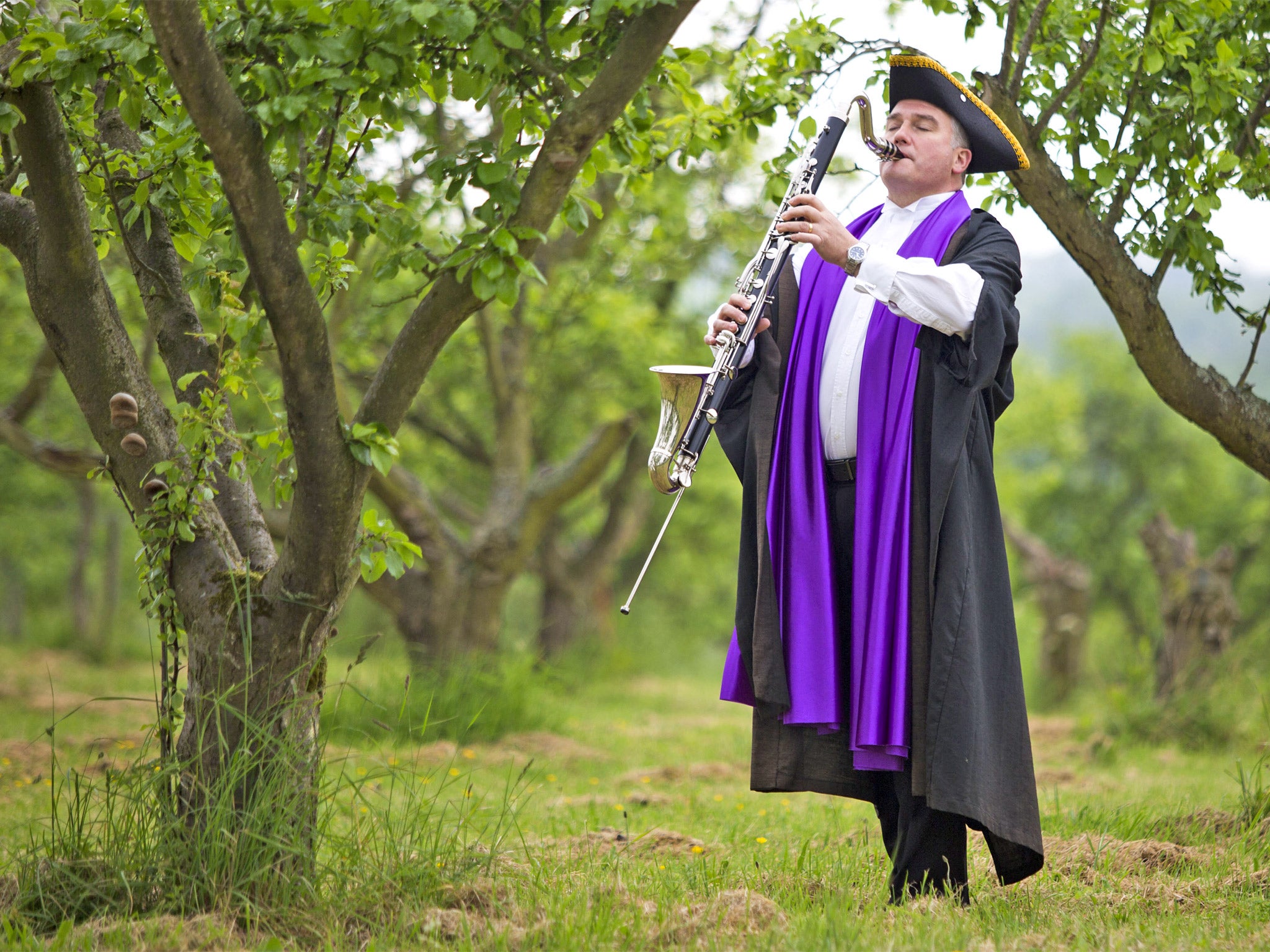What kind of music does a plum charmer play? Anything by the Stones or Deep Purple
Matthew Bell visits Pershore, the UK’s plum capital, where farmers anxious about this year’s crop have reinstated a rural tradition

The plums are green and hard. The drizzle is setting in. But thanks to the plum-charmer of Pershore, “Summertime” is here. Paul Johnson is playing Gershwin on a B-minor clarinet as he wanders the rows of stumpy trees. His robes are papal purple, and his hat is a black tricorn, edged with gold brocade.
Normally, on a Tuesday morning, you will find Paul grinding through wills at a solicitors’ office in town. Today, he is providing a more pastoral service, by making sure this year’s plum harvest gets off on the right note.
“I want to remind the plums it’s summertime,” he explains, “so that they’d better get growing.” If that doesn’t work, he’s brought a synthesizer that plays clock chimes – “to make the point time is passing!”
Like many rural traditions, the history of plum-charming is part folklore, part pub claptrap. What we do know is that wassailing – the practice of singing to orchards – has gone on in apple-growing areas, like Somerset, since medieval times. The idea was to scare off evil spirits and ensure a good crop.
Here in Worcestershire, no evidence has yet surfaced that plums prefer clarinets. “They do respond to the music,” says Mr Johnson, 51. “Somebody told me that if you can get the right key, and make the water molecules vibrate within the fruit, it will resonate and promote the ripening process.”
Plums are important to the people of Pershore. Originally from the Middle East, via France, they have grown here since at least the 1830s, when the landlord of the Butcher’s Arms found a new variety growing in the woods, and named it the Pershore Yellow Egg.
During the First World War, the town responded to the national food shortage by distributing tons of fruit by train. Great Western Railway thanked them by naming an engine The Pershore Plum. At the racecourse, now defunct, the “Land o’Plums Chase” was always the most popular race.
By the 1970s, orchards were deemed unprofitable, and EU subsidies encouraged farmers to scrub them up.
Richard Allen, 63, a retired engineer who now tends this 11-and-a-half acre orchard, remembers it well. “It broke my father-in-law’s heart,” he says. “He was paid to dig up his whole life’s work.”
The orchard we’re in, crowning a hill five miles outside the town, was bought by a local syndicate 14 years ago, and forms part of the so-called Blossom Trail for tourists.
For without plums, what is Pershore? “We don’t have an Alton Towers,” as Angela Tidmarsh puts it. She’s the tourism officer and chair of the annual plum festival, which was resurrected in 1996 by two local historians. In 1920, it was advertised as “the largest plum show on earth”. It can probably claim the title once again, as it now lasts the whole of August, and includes shop-window competitions, coach tours and markets selling plum-related produce, from sausages to soap. “We do go a bit plum crazy,” says Mrs Tidmarsh.
Today, the plums still look like bullets, but there are six weeks to go. The Hermans and Opals come first, followed by Oullin’s Gage, Blue Tit, and the Blaisdon Red. “With this year’s late summer,” says Mr Allen, “the season will probably go on into October, ending with the Marjorie’s Seedlings.”
That sounds like a band. Surely they should play to the plums. Or maybe that would be too weird, even for Pershore.
Subscribe to Independent Premium to bookmark this article
Want to bookmark your favourite articles and stories to read or reference later? Start your Independent Premium subscription today.

Join our commenting forum
Join thought-provoking conversations, follow other Independent readers and see their replies